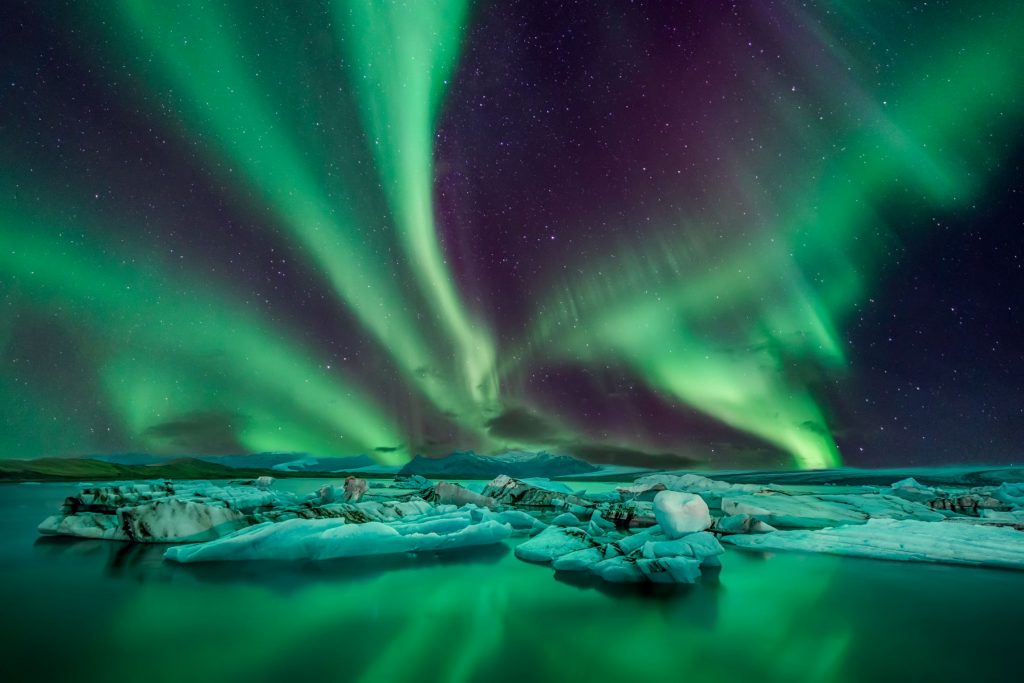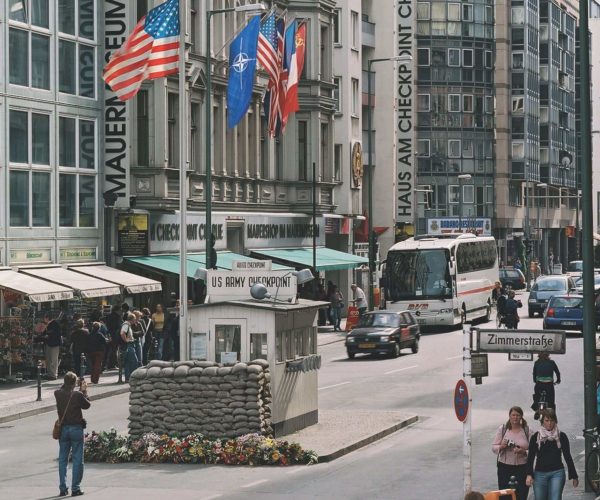Also known as Aurora Borealis, the Northern Lights are one of nature’s most spectacular and colourful displays.
They look like waves of light and they can be seen in the winter months in northern countries, generally between 60 and 75 degrees of latitude, close to the North Pole. This means the best countries to see them are Iceland, as well as parts of Canada, Alaska, Greenland, Russia, Finland, Sweden, and Norway.
The aurora can also be seen near the South Pole and these ‘southern lights’ are known as the aurora australis.

When is the best time to see the Northern Lights?
Dark and clear nights in the winter months are the ideal conditions to see the Northern Lights, particularly generally in the months from September to March.
What causes the Northern Lights?
The northern lights and southern lights are caused by activity on the surface of the Sun.
They appear when highly electrically charged solar particles from solar storms strike atoms and air molecules in the Earth’s atmosphere making them light up.
Some of these particles are captured in the Earth’s magnetic field, accelerating down towards the north and south poles into the atmosphere.
“These particles then slam into atoms and molecules in the Earth’s atmosphere and essentially heat them up,” explains Royal Observatory astronomer Tom Kerss. “We call this physical process ‘excitation’, but it’s very much like heating a gas and making it glow.”
What we are seeing are atoms and molecules in our atmosphere colliding with particles from the Sun. The aurora’s characteristic wavy patterns and ‘curtains’ of light are caused by the lines of force in the Earth’s magnetic field. (*https://www.rmg.co.uk/stories/topics/what-causes-northern-lights-aurora-borealis-explained)
Why are they different colour?
Different gasses show different colours when they are heated and this is what happens with the aurora too.
Nitrogen and oxygen are the two main gasses in the Earth’s atmosphere. The green we see in the aurora is characteristic of oxygen, while blue and reddish tones are caused by nitrogen.
DETAILS ON A SCHOOL TRIP TO ICELAND
You can find more details about our Northern Lights and Iceland school trip here: ICELAND SCHOOL TRIP.
LEARN MORE ABOUT THE NORTHERN LIGHTS
https://www.rmg.co.uk/stories/topics/what-causes-northern-lights-aurora-borealis-explained
https://earthsky.org/earth/what-causes-the-aurora-borealis-or-northern-lights/
Get in touch with our travel experts for advice and to start planning your trip to Iceland, one of the best countries to see the Northern Lights.
Contact Us



